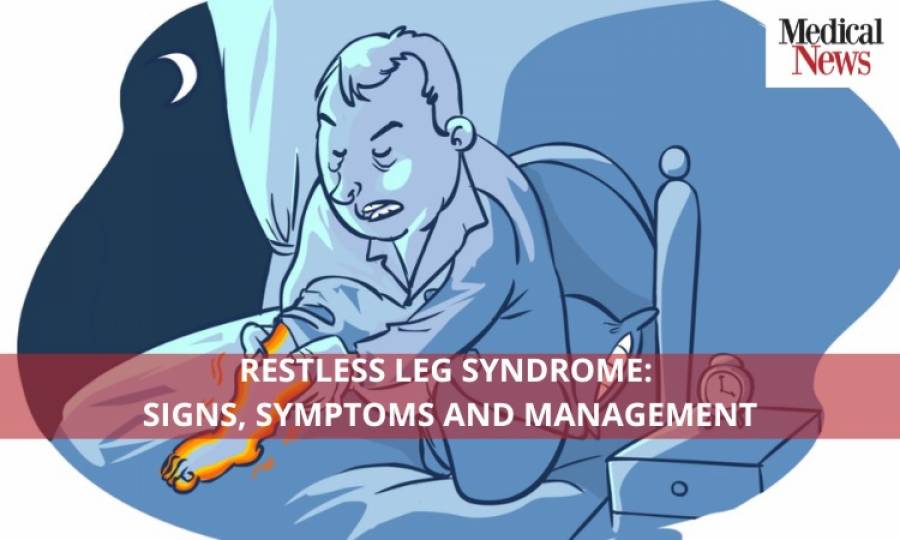Restless Leg Syndrome: Signs, Symptoms and Management

Insufficient sleep is a serious problem prevailing in our modern-day society. A considerable body of evidence suggests that sleeplessness leads to various health problems and adds burden to already existing diseases. However, many factors are associated with insomnia, restless leg syndrome being the primary one.
Restless leg syndrome (RLS) is a condition in which patients have an urge to bring their legs in motion. These movements are usually uncontrolled and occur due to some uncomfortable sensation. People suffering from RLS find it hard to sleep with an increased risk of depression and anxiety.
Cause and Association of Restless Leg Syndrome
The severity of the disease is characterized by the intensity and frequency of the symptoms. Autoimmune diseases, genetic factors, and medical conditions such as iron deficiency can increase the risk of developing RLS, but the cause of RLS remains unknown to a larger extent.
Whatever the cause may be, symptoms of RLS linger for a long time, which significantly impairs the individual's sleep and may also contribute to dopamine dysfunction in the brain.
RLS Signs to Look For
RLS is notably a common disease that is mostly underdiagnosed. It is roughly estimated that 15% of the population suffers from some degree of RLS. While the majority suffer from a minor form of the disease, severe cases are much more complex and can cause impairments in quality of life.
In addition to the irresistible urge to move your legs, RLS is often accompanied by itching, stinging or tingling sensations. Usually, both legs are affected, and fewer cases of asymmetrical involvement are also reported. Symptoms are usually aggravated at night, causing patients' inability to sleep and temporarily mitigated during activity.
It is crucial to evaluate the severity and frequency of symptoms while establishing a diagnosis. Because RLS causes significant sleep disruption, problems may emerge in the day-to-day behaviour of patients, ranging from irritability to severe depression.
Treatment Through Multiple Approaches
Since there is no cure for restless legs syndrome, it is important to differentiate RLS from various diseases such as leg cramps, venous stasis, myalgia etc. Treatment should focus on helping patients sleep better at night.
If RLS is not linked to any underlying disease, its frequency may be reduced by lifestyle modifications such as adopting improving sleep patterns, regular exercise, and ceasing smoking. Medications used to treat severe RLS are dopaminergic drugs that help regulate dopamine levels in the brain.
Minor cases do not require medications. Just Additional lifestyle changes, massage therapies and avoiding caffeine can also benefit them. Doctors may also recommend iron supplements for patients with iron deficiency and RLS.
Help and Hope Are Always Available
Research and further investigations to better understand the pathophysiology of the disease process is underway. Recent studies have shown the positive effects of newer therapies like endo venous laser therapy (EVLT) and sclerotherapy in patients with severe symptoms.
If you think you might be suffering from this disease, it is essential to see your doctor and get an early diagnosis for successful treatment outcomes. People can live normal lives if their symptoms are managed properly and early.
Trending
Popular
Dow University’s new rabies vaccine is just a phone call away
-
IRD role lauded in advancing ...
02:53 PM, 12 Mar, 2024 -
Over one billion people worldwide ...
09:48 AM, 5 Mar, 2024 -
'Artificial tongue' introduced to ...
03:38 PM, 4 Mar, 2024 -
Health Alert: Dried fruits found to ...
11:47 AM, 2 Mar, 2024




